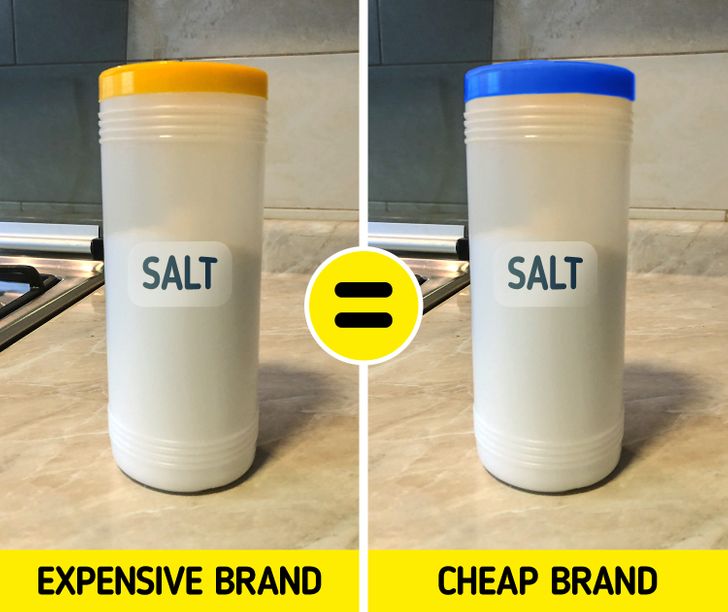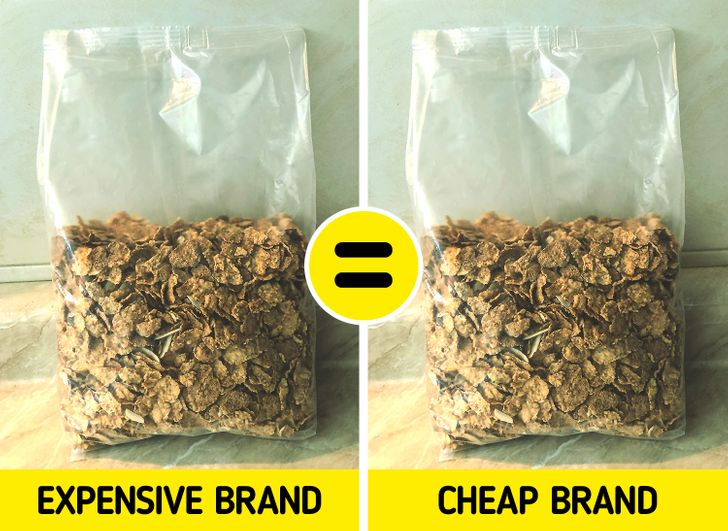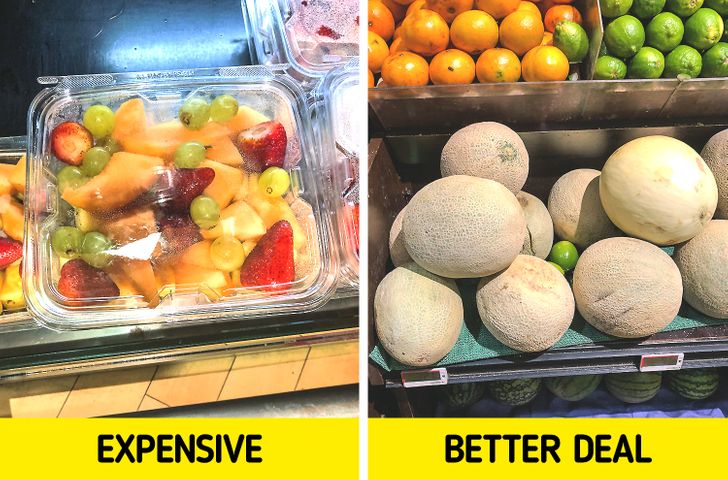15 Times People Found Strange Things and Internet Detectives Came to the Rescue

When it comes time to make choices at the supermarket, some people may have the belief that the most expensive products are the best, but this is not always the case. Sometimes, you can optimize your budget by choosing inexpensive products that have the same quality as the more expensive ones. One alternative you can try is a private label of a large chain, which can offer the same products at lower prices since they don’t make significant investments in certain commercialization, distribution, marketing, and advertising processes.
At Bright Side, we prepared a list of 10 products that have no difference in quality when compared to their more expensive counterparts.
People who are good in the kitchen know that the use of spices can make for a great dish. Faced with a parade of jars containing spices like cinnamon, cumin, turmeric, or pepper on the shelves, you may prefer the cheapest option or the supermarket’s own brand.
Whatever you choose, it’s important to keep an eye on the expiration date because, over time, the flavor of the seasonings may change. You should also think about this when buying them in bulk, which is another way to save money and take care of the quantity you buy since they are usually used in small portions, and perhaps the ones you use the least can last a long time. A solution to this could be to share the purchase with a friend or relative.

Salt is probably one of the most commonly used condiments for seasoning food. Although common table salt is a product that’s considered cheap in many places, it’s also possible to choose an economical alternative that adds to household savings since the ingredients it contains don’t vary much from one brand to another.
For reference, in a regular supermarket chain, we found that 2 pounds of salt in a jar (a plastic container) of a well-known brand costs $1.00, and that of the independent brand, $0.75.
Just because a product is more expensive doesn’t mean that it’s also more effective. For example, the bleaches you get at the supermarket usually have these main ingredients: sodium hypochlorite, anionic surfactant (one of the key components of detergents and dishwashers), and fragrance, so you could use lower-priced bleaches.
It’s fine if you already have a favorite brand due to its scent, but to round out the list of cleaners and disinfectants, it wouldn’t be a bad idea to start trying some of the cheaper ones.
Nuts, such as almonds, hazelnuts, peanuts, and walnuts, are good for your health and are ideal for snacking without excess. However, in some places, their prices can be a bit high.
There are 2 ways to avoid spending too much money on them: one is to choose the supermarket chain’s own brand (if they offer this), and the other is to buy them in bulk and freeze a portion when it comes to large quantities. There is no need to always go for the most expensive versions.
It’s a disposable product, therefore, we don’t see the need to spend too much on it. In a supermarket, you can find boxes with 50 units for anywhere from $1 to $2.50, approximately. When they are used to organize the kitchen or to take a sandwich or snack out of the house, you can opt for the economic brands and those under the supermarket label. If the purpose is to use them for freezing, it is advisable to test if the cheaper ones are resistant enough to contain the food.
Let’s not forget that we can often wash and reuse them, thus saving money and having a better impact on the environment.
Snacks are snacks, and many people already have their favorite brands, but from time to time, you can try lower-priced packaged versions to find out if they also taste good (or even better). In times of sharing, when the number of diners is higher than usual, it’s also possible to save some money by choosing the most economical chips or nachos.
It’s possible to find a good supermarket brand of wheat flour or other less expensive flour to prepare simple recipes at home. Just be sure to verify that it has the same ingredients as the one you usually use.
Another tip that some savings experts share is to use wheat flour to make cakes or pancakes instead of ready-made mixes since they have limited use in addition to being more expensive. For example, a mix for making pancakes can be double the price of packaged flour.

Among the great variety of cereals that exist, it’s possible to choose some of the most economical brands when you have a goal of saving money at the supermarket. You can look at the generic and cheap versions of the most common ones, such as corn flakes or wheat flakes. To get an idea of the price difference, we found that a supermarket brand offers cereals for about $2.50, but you can also find others for up to $5.
It’s recommended that, beyond the brand or price, consumers review the nutritional table on the cereal boxes, especially at the amount of sugar, so that they can make the best choice.
Beans are a staple food, and some supermarkets offer their own versions of them, which is why they are on our list of products that don’t have to be the most expensive just because of the brand, especially when they’re raw or dried. And this doesn’t only apply to beans, but also to other grains or legumes, such as lentils and chickpeas.
Those who consume canned food should consider that the variety of brands may have some differences in taste or texture, so your choice will depend on your personal preference (and not the price or marketing of the product). It’s recommended to taste and compare.

They are imperative to maintaining a healthy and balanced diet on a daily basis, so it’s not something we can eliminate from the grocery list. When it comes to frozen fruits, there are no big differences between brands, so you can avoid paying for the most expensive version. Another way to save is to buy them at local vegetable and fruit stands and freeze them at home.
Reducing the consumption of those that come washed, chopped, and ready to eat in plastic containers is another measure that contributes to one’s budget, as well as choosing more seasonal fruits and vegetables since they’re cheaper.
Remember that this article is for informational purposes only; before substituting one brand for another, we recommend consulting a nutritionist when it comes to food. That way, you’ll be sure to make an appropriate choice that also takes nutritional value into account.
What other products do you think we should include in this list? What is your best tip for saving money at the supermarket?











